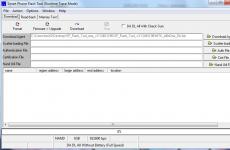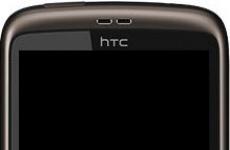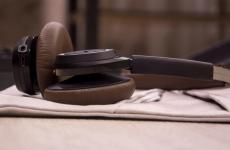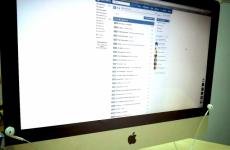Smartbuy flash drive recovery program 32 GB. Recovery of SD cards and USB flash drives in Windows environment
Do you have an inoperable USB flash drive or other media and you are wondering which program to choose for recovery?
We have reviewed the most popular utilities. Which of the above programs is right for you and will restore a flash drive with a 100% guarantee?
A one-of-a-kind program will help you pull out all the data Hetman Partition Recovery. It is loved by both beginners and pros for its convenience, speed and advanced data recovery algorithm. Your files will be found and copied even when the FS of the media is no longer available or it is damaged.
JetFlash Recovery Tool is a proprietary utility that has the simplest interface and support for working with Transcend, JetFlash and A-DATA drives. Management of only two buttons, obviously you will like it. Do not forget that the cleared data cannot be restored, so saving information from a USB flash drive will not be superfluous.
If you have a need to always have a universal program with you, which is convenient to use both on home computer, and beyond, we recommend D-Soft Flash Doctor, its platform does not require pre-installation, it starts instantly on any PC. The software is suitable for repair, unlock,
restore the volume of the flash drive and its performance.
If you need to recover SD cards, we advise you to download F-Recovery SD, which has an effective set of simple options for working with damaged flash drives from digital cameras and other portable devices. From the point of view of a professional approach to Flash drives, it will be interesting to use the Flash Memory Toolkit, the application contains a whole range of additional functionality that can test flash drives, in addition, the program works with any version of the OS from Microsoft.
To recognize the maximum number of different types of Flash Drives, among the above utilities, as well as quickly reanimate the performance of drives, the USB Disk Storage Format Tool formatting and recovery utility, which has a very clear and convenient interface, can be used. The USB Disk Storage flash drive repair program will be able to quickly recover data from damaged partitions hard drive even if flash drive firmware problems are detected.
If no flash drive recovery program has helped, we recommend checking the status of the memory controller using the ChipGenius utility. The program works with USB, micro sd, SD, SDHC and USB-Mpz players from Kingston, Silicon Power, Transcend, Adata, PQI. Further actions to correct errors, restore lost data are only advisable if
flash drive is defined in Chip Genius.
I got into a little trouble. A 32 GB flash drive from transcend stopped working. That is, the operating system does not see it. And not that there would be very valuable information there, but because of the large volume, it became a pity to throw away the flash drive “without a fight”.
Using the regular utility JetFlash Recovery Tool, it was not possible to reanimate the device. I had to find another way. Having “googled” a little on the topic of how to restore a USB flash drive, I found an online service for firmware directly from the manufacturer.
The service, for obvious reasons, only supports devices manufactured by Transcend. If it happened to your flash drive that it refuses to be detected in the system or some other malfunction has occurred. Do not rush to throw it away, but try to restore it using the online recovery service.
It was with the help of him that I managed to restore the performance of my flash drive.
For greater clarity, I recorded a video on how to restore a flash drive using the transcend service:
To use the transcend flash drive recovery service, you need to go to the site by entering the following address in the address bar of your browser: http://en.transcend-info.com/support/DlCenter/DLSoftware.asp?SID=3
So, let's go to the service page. Select the type of your device.

You will need to register to download the program.

You will be prompted to download the OnlineRecovery program. It should be noted here that the program will require administrator rights! Therefore, you need to run the utility as an administrator.
After starting the program, you need to select the volume of the drive to be restored. In my case, this is 4 gigabytes, and click "OK"
While the program is running, do not turn off the Internet connection!
After the program checks the flash drive, you will be prompted to restore the device without saving data, or you can try to restore the information.
We press start.
That's all. We are waiting for the end of the process, after which we remove the flash drive and check the performance.
In this article, I wrote how to restore a transcend flash drive using the manufacturer's regular service.
Thus, I managed to recover two flash drives of 32 and 4 gigabytes. I hope this method will help you too. Good luck.
How to restore an SD card or USB flash drive if the computer does not see them, does not read or write data? Problems with flash drives are rarely caused by normal wear and tear. More often, the causes of problems with them are ignoring the rules of safe removal of the device by users, experimenting with various software in which these flash drives are involved, as well as their initially lousy quality. Below we consider a list of possible actions carried out in the Windows environment that can solve the problem, unless, of course, the cause lies in a mechanical failure. And we, friends, will go from simple to complex.
Recovery of SD cards and USB flash drives in Windows environment
- Note: below we will only talk about restoring the performance of flash drives, but not about saving the data stored on them. This is a separate topic, and on this account the site has, you can still use this program for. Most of the methods for recovering SD cards and flash drives suggested below will result in the loss of their data.
1. Hardware lock
SD cards, MicroSD adapters and flash drives can be hardware-protected from writing data or completely blocked even for reading. These devices have a lock switch, which must be set to the "Unlocked" position accordingly.

2. Problems not related to the drives themselves
The cause of problems with SD cards and flash drives can be the Windows security policy. You need to find out if access to removable drives (in full or in part of writing data to them) is blocked by the computer administrator. You also need to check the card reader or ports Computer USB. If everything is in order with the latter - the card reader reads other SD cards, but there are still problems with the flash drive, no matter how you connect it to other USB ports, let's move on.
3. Windows Explorer
Standard formatting using Windows Explorer can help in simple cases such as unsuccessful data writing to a USB flash drive. Or when for some reason a smartphone, tablet, camera or other device cannot handle this operation with respect to SD cards. In any of the current Windows versions in the explorer window on the drive, call the context menu, click "Format".

We leave the original file system and first try a quick format.

If it fails, we repeat the operation, but with full formatting (uncheck the quick one).

4. Windows Disk Management
You can try to format the format in disk management. To launch this tool, in the system search field, enter:
diskmgmt.msc
In the disk management window, focusing on the size of the drive, we are looking for it among the drives connected to the computer. And in the context menu called on it, we start formatting.

You can immediately choose full formatting.

If your flash drive has a partition structure like a hard drive, you need to delete each of those partitions. This is done using the option in the context menu "Delete volume".

And then, in place of the resulting unallocated space, you need to create a single partition. To do this, in the context menu on this very unallocated space, we launch the “Create a new volume” operation and follow the instructions of the step-by-step wizard.

5. Programs for low-level formatting
Regular formatting tools may not help in difficult cases, for example, when flash drives are displayed (in the same Explorer or Disk Management) as unrecognized devices with the RAW file system. The latter means that either the Windows environment does not understand the file system of the drive, or there is no file system as such in principle. Actually, this is what causes problems with a flash drive or SD card when it works on other devices, with other operating systems. In such cases, third-party Windows programs designed for the so-called low-level formatting will help restore the USB flash drive.
In fact, low-level formatting is a procedure that is carried out either in the production environment of flash device manufacturers, or in serious narrow-profile services. Various Windows software that claims this kind of operation actually performs the usual full format, but by mechanisms different from those used by the operating system. Such programs are good at dealing with flash drive problems if these problems occur at the file system level. Let's look at two of these programs.
HDD Low Level Format Tool
http://hddguru.com/software/HDD-LLF-Low-Level-Format-Tool/
Shareware portable HDD program The Low Level Format Tool can format various types of storage media such as SD cards and USB sticks. After unpacking the archive with the program, run it, agree to the license terms.

Choose free use.

Directly in the program window, specify the problematic drive and click "Continue".


We confirm the decision.

We are waiting for the operation to complete and check the operation of the media.

SDFormatter
http://flashboot.ru/files/file/355
The completely free little program SDFormatter is another tool for so-called low-level formatting. Works with both SD cards and USB sticks. We install SDFormatter into the system, launch it, in the "Drive" column we indicate the problematic flash drive. Click "Format".

The program wants to make sure the seriousness of our intentions, click "OK.

Asks not to touch the drive while the operation is being carried out.

Upon completion, we test a USB flash drive or SD card. If it doesn’t help, repeat the operation with the settings for a complete rewriting of sectors (nothing more than a full format). Press "Option", select "Full (OverWrite)". And also click on "Format" at the bottom.

If using the above methods it was not possible to reanimate the flash drive, and it is still under warranty, you need to stop at this stage. And take no further action, except to contact the seller with a request to replace the device. All the actions that are described below should be resorted to only when, in fact, there is nothing to lose. The instructions below apply to USB sticks, SD cards, and MicroSD cards. However, in the case of the latter, the probability of recovery is extremely small.
6. D-Soft Flash Doctor
D-Soft Flash Doctor performs the so-called low-level formatting, and along the way it also detects bad sectors (cells). Well, and, accordingly, knows how to block them and replace them with backup ones. The program can help when flash drives or SD cards have difficulty reading individual files that have fallen on bad sectors. The program is free and portable. I did not find the official site, but it can be freely downloaded on the Internet.
In the D-Soft Flash Doctor window, the first thing to do is run a scan for errors.

In my case, there were no damaged (broken) sectors.

But if in your case, friends, the scan results are different, and bad sectors are found, we start the recovery process.

The window for this operation promises that the process will not last longer than 10 minutes, but in fact, remapping bad sectors on a drive with a capacity of more than 4 GB can take quite a long time. So it is better to run the recovery operation at night.

7. Flashing the memory controller
Programs for the so-called low-level formatting or their analogues, in any other form declaring the function of resuscitation of all types of SD cards and / or USB flash drives, turn out to be powerless in the event of a software failure of the controller when it needs to be flashed. This problem may have different symptoms, but more often it is either the computer does not completely see the drive, or it sees, it can even read data, but cannot format it by any means. In particular, due to write protection, despite the fact that the drive is not blocked by hardware.
There are many factors that lead to the fact that flash drives refuse to work. In this article, we will consider not the reasons, but ways to return products to full functioning. To do this, we will study the process of how to flash a USB flash drive using special utilities.
The USB drive formatting function is not available, the operating system software signals errors, and special utilities do not give the desired result? You can restore the functioning of the product by flashing a flash drive, or rather, flashing a flash drive controller.
Firmware is usually called firmware, which consists of service information on microcircuits and controller microcode. This microcode is embedded in the product during the manufacture of the gadget at the factory. The service can overwrite many times during operation.
Performing a software repair (repeating the factory steps) consists of the following:
- Cleaning.
- Memory testing.
- The process of compiling new translation tables, their subsequent recording in the service fields.
All of the above actions are "low-level formatting".
For such work, utilities for controller models have a strict specialization. Because of this, the repairman needs to find the appropriate one for a particular instance. Chip options may vary in different batches. In some cases, you have to sort through more than a dozen options.
Definition of type (brand)
Before the flash drive is flashed, it is required to determine the PID, VID values for it. With their help, you can find out the model by which the technological program for repair will be determined. To determine the model, the easiest way is to look at the marking after opening the case. A more gentle way is to use software methods.
Special software is used that recognizes any USB flash drive to find the manufacturer's identifier (VID code) and product identifier (PID code). For example, let's take the Flash Drive Information Extractor program (there are many other software).
After the application installation process, run the GetFlashInfo.exe file. Then we click on "Get data" and the user will be presented with a report with the codes of interest.
Based on the received VID and PID data, we determine the controller and software (UTILS) in the iFlash database so that the flash drive controller is flashed.
With a similar controller, other devices will be presented in the list. Of these, more similar ones are intuitively selected. Now you need to find the utility, enter the found name in the search engine. If the resource you are looking for is not found, you can turn to other sources or google. If the name is slightly different, everything should work out.
Choosing an operating system for technoutilities
Best of all, technological utilities work under Windows XP. Manufacturers are more conservative and do not chase after fashion. In the work it is necessary to install drivers and perform other "dangerous" actions. Therefore, you need to have administrator rights.
How to flash a flash drive found program?
First, turn off the drive, and then run the exe file of the downloaded and unpacked software (in our example, MPTool.exe).
In the archive, you need to look for the readmi.txt text file (read me). It may contain useful data, an instruction, or a link to a source with it. Google translate can translate English text.
When the application is launched, we connect the USB flash drive to the PC. Information about it will be shown in the program window. After pressing the "Start" button, the process of flashing the flash drive will begin, which is reflected in the yellow bar.
When the flashing is completed, an approving text will be displayed on a green background in one of the cells - OK.
Immediately the operating system will be prompted to format the disk. If the computer has correct driver, then everything can work out. If the driver is missing, then you need to detach / attach the drive. Then the necessary driver will be installed automatically, the flash drive will be displayed in the explorer, after which you can start formatting.
With other utilities, the actions may differ, but not so critical that the user cannot cope with the process.
Manufacturers began to add to the public software, which is intended for repairing flash drives. To download what is necessary in a particular situation, see the section technical support choose a model. Sometimes a serial number may be additionally required. Quite often, the serial number is requested by the program itself and checked using the Internet. It will not be superfluous to authenticate using the SerialCheck software, since fakes are all around us.
For almost all models, you can restore functionality by using proprietary software. It is possible to find similar situations on the forums. The process of flashing the controller of the Chinese flash drive has no differences, except for its smaller capacity compared to the declared one. A flash drive can be unrepairable if the brand of the controller is unrecognized.
SanDisk flash drives are in difficult situations. This is due to the conduct of their corporate policy. The company itself performs a full production cycle, starting with the development of non-standard solutions and ending with implementation. There is no repair software for them.
Flash drives in the form removable drives quite often they are subject to negative physical and software effects, as a result of which fatal errors may occur on the storage media themselves (including those associated with incorrect operation of microcontrollers). We will not consider mechanical damage, but will focus more on software errors that are eliminated quite simply. To do this, you can use either operating system, or programs for flash flash drives. How expedient this is and what results the use of such applications can give, let's try to figure it out.
Why do you need programs to flash flash drives?
You will be interested:
Apparently, it is no secret to anyone that sometimes when you insert a flash drive or removable memory card into the appropriate port or card reader, the system displays a message stating that the device is not recognized. The flash drive can be accessed at best, but sometimes it can only be accessed for viewing content without the ability to edit it. No less common are problems related to incorrect formatting, which are especially common when working with memory cards. In this situation, the system does not report that some device is write-protected, but states that it is simply not connected.





